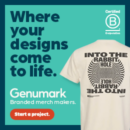Entertainment Nation exhibit designed by Reich&Petch presents difficult history of American entertainment
Written by Reich&Petch
CONTEXT
Reich&Petch was commissioned by Smithsonian Institution National Museum of American History in Washington D.C. to design an exhibit for Ray and Dagmar Dolby Hall of American Culture: Entertainment Nation. Reich&Petch designed all of the exhibits and graphics for the gallery and led the consultant team that consisted of multimedia designers, lighting designers and media hardware integrators. The Entertainment Nation gallery challenges visitors to explore how American ideals and national identity are reflected in entertainment and how, in turn, entertainment shapes them.

METHODOLOGY
The graphic design challenge was to create a contemporary graphic language that could span several decades, while at the same time, unifying the eras and curatorial messages, especially in a relatively small and narrow space. The graphic design takes its cues from early American woodcut posters and advertisements for plays, concerts, boxing matches — a uniquely American design vernacular. Mid-way through the project, the decision was made that the gallery should be fully bilingual — English and Spanish. This required a redesign of the info-rail system, as well as adjustments to the typography and image treatment, while still retaining a feeling of space and accessibility on these panels.
The curator’s goal was to highlight the fun of the objects, the nostalgia and charm of the objects while also describing the more serious cultural, historical and often difficult currents swirling around US entertainment. We developed two “voices” – the “entertainment voice” which is expressed through direct large-scale quotes taken directly from the entertainment itself; and the “curators’ voice” which appears as restrained yet clearly articulated support text. The curators’ voice places the object, person or entertainment in its historical context. This voice is also expressed on the backs of each “Spotlight” as the visitor moves along the central Red Carpet experience. The fronts of these “Spotlights” highlight the “entertainment voice” and are treated with more colour and clues from the focus object.

The primary colour palette starts with a red, white and blue palette with yellow added as a nod to spotlights and marquee lighting. The shapes of the graphic panels inside casework and along the Red Carpet are taken from the angles spotlights make, as well as the circular shape spotlights make when focused on one object. Blown up and cropped imagery creates drama and visually identifies eras. The updateable and changeable graphic panel system was designed for the future rotation of objects and content updates. An exciting challenge faced the design team when integrating a state-of-the-art Dolby Atmos immersive sound system into the gallery’s established design. Both the exhibit and media designers responded accordingly working closely with the Smithsonian staff and the Dolby team to ensure all components were integrated as required. The result is an enhanced experience achieved through a custom playback system designed to transport visitors into the exciting world of the movies through immersive ‘takeover’ moments.
RESULT
Entertainment Nation is a fully bilingual, visually spectacular permanent exhibition showcasing 200 beloved objects and future rotations from the Smithsonian’s renowned collection from 1890 to the present. Touchable bronze models are placed in front of casework as tactile components of the gallery’s commitment to accessibility.
A multi-sensory and deeply expressive experience is achieved using marquee lighting, ribbon-like LED media screens, pulsing media, iconic objects and reminiscent graphics, imagery and sound. Spotlight objects include Dorothy’s Ruby Slippers from The Wizard of Oz, Muhammad Ali’s boxing robe, the droids from Star Wars and Prince’s Yellow Cloud Electric Guitar. The custom casework system was designed to ensure security and conservation for the many sensitive items on display, while allowing for object rotation.

While the exhibit aims to be joyful, nostalgic and exuberant, it also prompts reflection and challenges visitors to consider the complex and the often-difficult history of entertainment in the United States.
Credits:
Principal-in-Charge/Exhibit Designer: Pauline Dolovich
Principal-in-Charge/Exhibit Designer: Stephen Petri
Exhibit Designer: Fang Pin Lee
Senior Graphic Designer: Molly Montgomery RGD
Senior Technologist: Gonzalo Martinez
Senior Exhibit Designer: Len Soccolic
Content Coordinator: Heather Aitken
Designer: Manu Sharma
Designer: Evan Brock
Graphic Designer: Ben Mitchell
Senior Technologist: Kazumi Li
Subcontractors:
Architecture, Engineering: Ewing Cole
Lighting design: Available Light
Media design: United Field
Media Hardware Integration: Big Show









